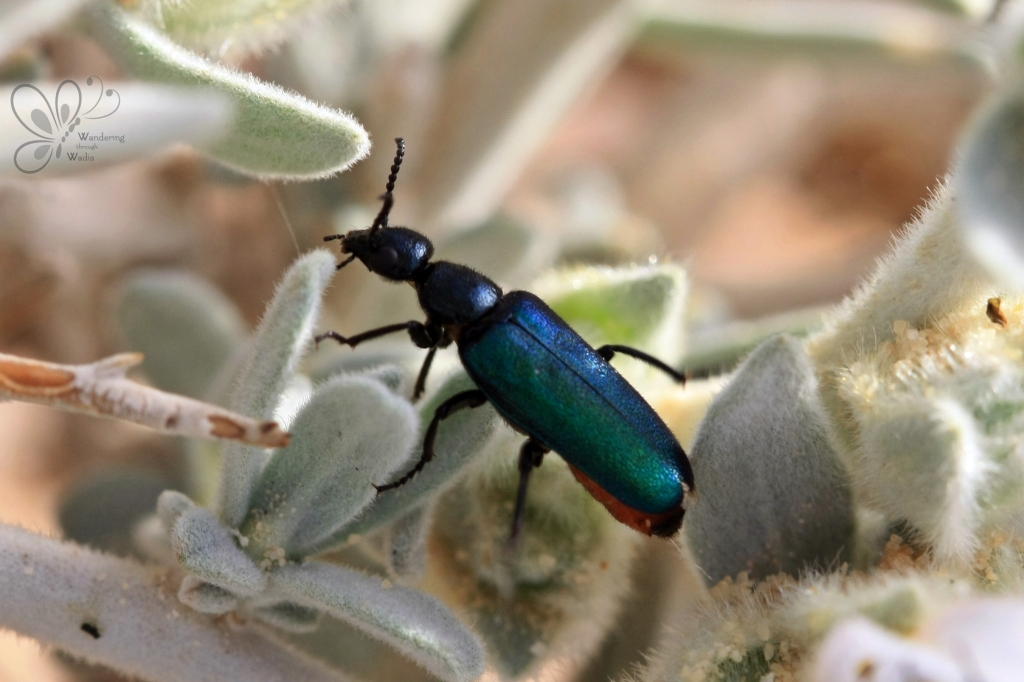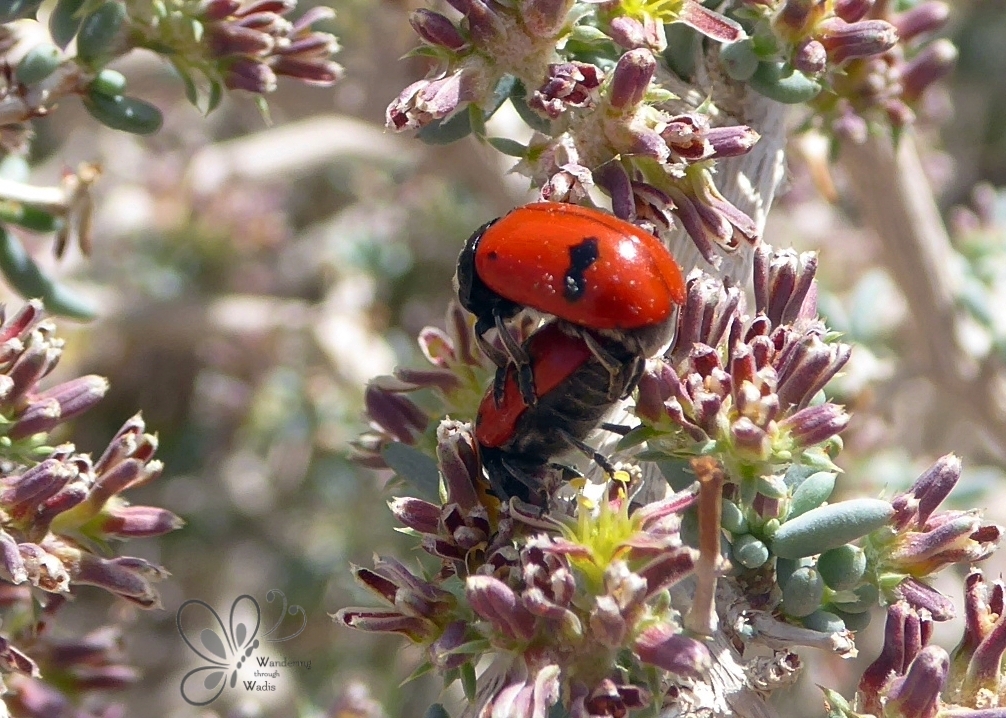


These colorful insects belong to the Meloidae family of beetles and are commonly known as blister beetles. There are around 3,000 different species of blister beetles worldwide, and 145 species known in Egypt. They earned their common name from their defense mechanism – a secretion of a blistering agent, cantharidin. Getting this on your skin would cause an irritating reaction, but cantharidin is also used medicinally to remove warts.



Like all beetles (Order Coleoptera), they have hardened front wings that meet in a straight line in the center of their backs. Meloids, or blister beetles, are elongate in shape and the sides of their body are parallel. The pronotum, the hard shield-like covering on their thorax, is usually narrower than the head, and the tarsal claws are split in two lengthwise. Blister beetles are often conspicuous, with outstanding and noticeable colors. This announces their toxicity to potential predators.

Blister beetles lay their eggs in masses under stones, in the ground, or on the food plants of the adults. The larvae are insectivorous and are predators of grasshopper eggs and immature bees that they consume after entering the nests. Adults can live three months or more and feed on the nectar and pollen of a diverse range of plants – from the amaranth, aster, legume, and nightshade families. Some blister beetles also feed on foliage, leaves, and flowers and can be destructive to gardens and crops. In Egypt, for example, Meloe rugosus is a pest on agricultural crops in the western desert and feeds on fava bean, wheat, peas, alfafa, and onion plants.
Adult blister beetles are seldom seen. Have you ever spotted one while wandering through wadis in South Sinai?

Any connection with the common ladybug with a similar appearance?
LikeLike
Besides the fact that they are both beetles in the Order Coleoptera, they are also in the same suborder (Polyphaga) and infraorder (Cucujiformia) – plant-eating beetles. But they are in different families. They both also have those bright colors to warn of their toxicity, so they have that in common, too.
LikeLike